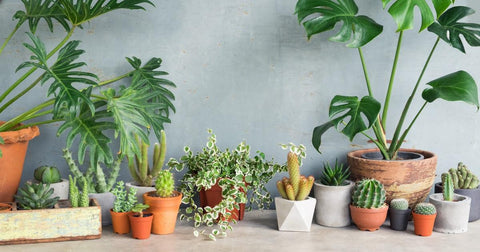Winter marks a period of rest for indoor plants, and preparing them for the season involves making some simple yet crucial changes in their care. Getting your plants ready includes shielding them from the effects of fluctuating temperatures, indoor dry air, and lower light levels. Read on to discover how to prepare your indoor plants for winter.

Tips for Winter Indoor Plant Care
1. Adjust Watering: Help indoor plants prepare for dormancy by reducing water amounts and irrigation frequency. Only water when the top one to two inches (2.5-5 cm) of soil feels dry to the touch. Slow growth in winter means excess moisture can lead to root rot. Some plants need minimal water during the winter, with cacti and other succulents possibly not requiring water until spring.
2. Combat Dry Air: Winter indoor air can be excessively dry, causing leaves to curl, turn yellow, or brown. Indoor plants benefit from added humidity during winter, either through indoor humidifiers or strategic placement in high-humidity areas like bathrooms or kitchens. Placing pots on humidity trays—shallow trays with a layer of moist gravel or pebbles—can increase the surrounding humidity as the water evaporates.
3. Maximize Light Exposure: Winter indoor plant care may involve moving plants to brighter locations, such as different rooms or windows facing west or south. Regularly rotate plants to ensure all sides receive equal sunlight. If natural light is limited, consider supplementing with grow lights featuring a mix of warm white and cool white tubes. Ensure plants aren't exposed to drafts, vents, fireplaces, or drafty windows.
4. Optimize Natural Light: Clean windows in the fall to allow maximum light during winter. Open curtains or blinds during the day. Wipe plant leaves with a soft, damp cloth to enhance light absorption.
5. Adjust Feeding Habits: Alter your regular plant feeding routine during the winter, as encouraging new growth when plants are entering dormancy is counterproductive. Reduce feeding in the fall and abstain from fertilizing entirely during winter. Resume regular feeding when you observe new growth in spring.
6. Delay Repotting: Postpone repotting when plants are actively growing. Fall and winter are not ideal times for disturbing root systems.
7. Prune and Remove Debris: Trim plants and eliminate dead or yellowing growth from your indoor plants during the winter. Avoid pruning healthy green growth, as pruning stimulates new growth, forcing the plant to work when it's trying to rest.
Preparing indoor plants for winter ensures they enter a period of rest in optimal condition, ready to flourish when the growing season resumes.









